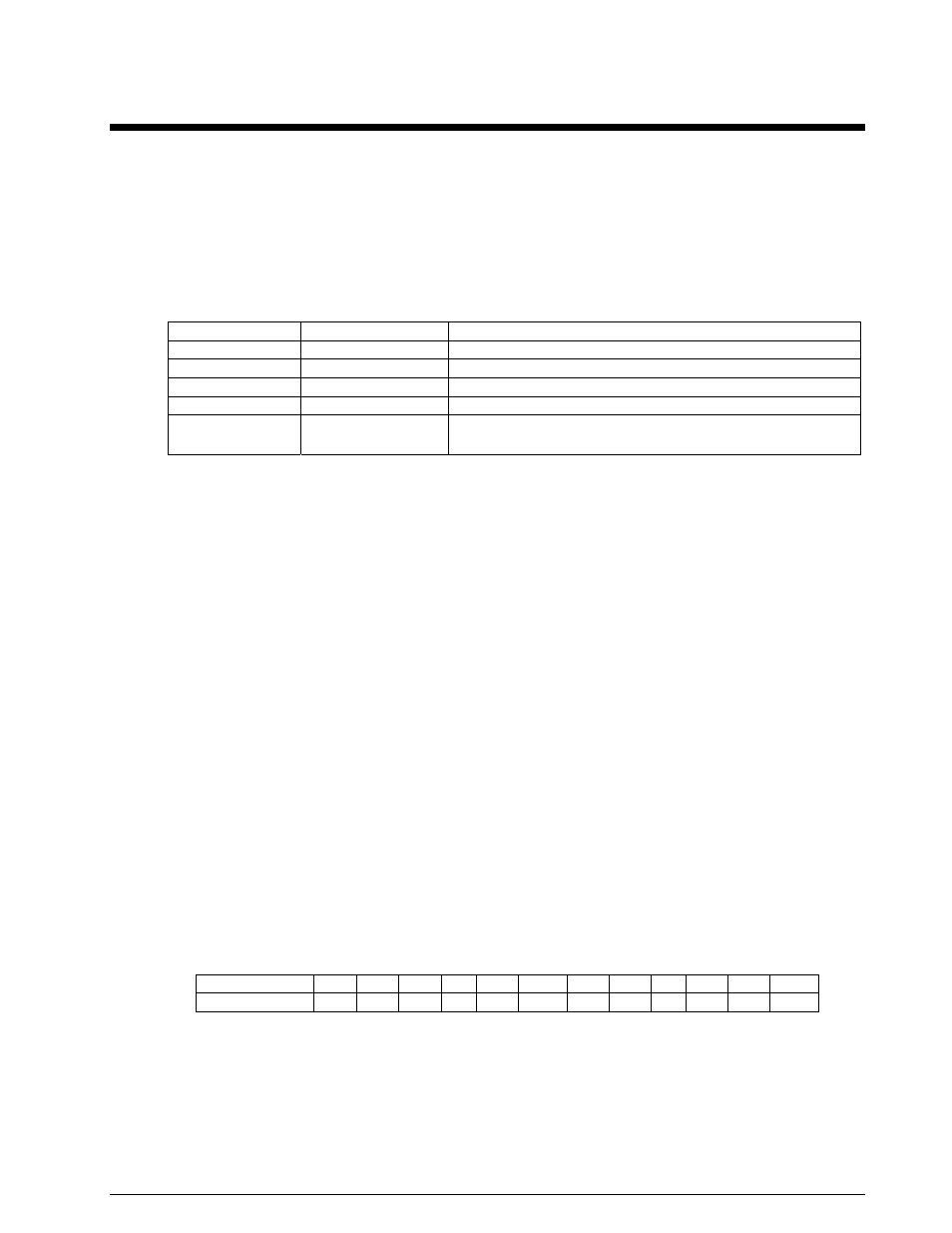Daqadcbufferrotate – Measurement Computing Data Acquisition Systems rev.10.4 User Manual
Page 59

daqAdcBufferRotate
Also See: daqAdcTransferGetStat,
daqAdcTransferSetBuffer
Format
daqAdcBufferRotate(handle, buf, scanCount, chanCount, retCount)
Purpose
daqAdcBufferRotate
linearizes a circular buffer acquired via a transfer in cycle mode.
Parameter Summary
Parameter Type
Description
handle DaqHandleT
Handle to the device whose ADC transfer buffer will be rotated
buf PWORD Pointer to the buffer being rotated
scanCount DWORD
Total number of scans in the buffer
chanCount DWORD
Number of channels in each scan
retCount DWORD
Last value returned in the retCount parameter of the
daqAdcTransferGetStat
function
Parameter Values
handle:
obtained from the daqOpen function
buf:
must be a valid pointer to memory whose size is at least equal to
(scanCount * chanCount * 2)
scanCount:
valid length of buffer from 1 to 4,294,967,295 scans; however, memory limitations apply
chanCount:
defined by channel configuration; see daqAdcSetScan for details
retCount:
valid range of 1 to 4,294,967,295
Returns
DerrNoError
No error
Function Usage
This function will organize the circular buffer chronologically. In other words, it will order the data from
oldest-first to newest-last in the buffer. daqAdcBufferRotate is used primarily with pre-trigger scans
When scans are configured using daqAdcTransferSetBuffer with a DatmCycleOn value for the
transferMask
parameter, the buffer is set up as a circular buffer--once it is full, it is re-used, starting at the
beginning of the buffer. Thus, when the acquisition is complete, the buffer may have been written over many
times and the location of the last acquired scan may be at any point within the buffer.
For example, suppose a buffer is set to hold 60 scans, and an acquisition of 1000 scans is triggered. The buffer
is first filled with scans 1 through 60. Once the end of the buffer is reached, new scans are written at the
beginning of the buffer: scan 61 overwrites scan 1, scan 62 overwrites scan 2, and so on, until scan 120
overwrites scan 60. At this point, the end of the buffer has been reached again--so, scan 121 is stored at the
beginning of the buffer, overwriting scan 61. This process of writing and overwriting the buffer continues until
all 1000 scans have been acquired. At this point, the buffer has the following contents:
Buffer Position
1 2 3 ... 39 40 41 42 ... 59 59 60
Scan
961 962 963 ... 999 1000
941 942 ... 958 959 960
Since the total number of scans is not an even multiple of the buffer size, the oldest scan is not at the beginning
of the buffer, and the last scan is not at the end of the buffer. The daqAdcBufferRotate function can
rearrange the scans into a more natural order, writing the final scan into the final buffer position. This results in
the follwoing arrangement:
Programmer’s Manual
908594
Daq API Command Reference 4.2-3
